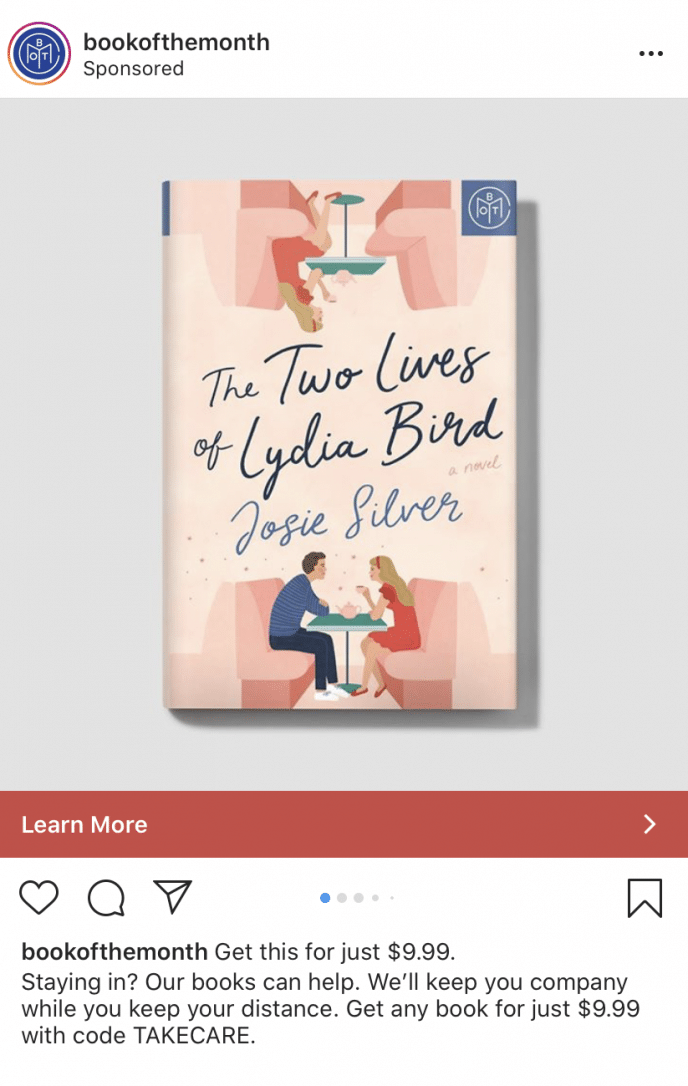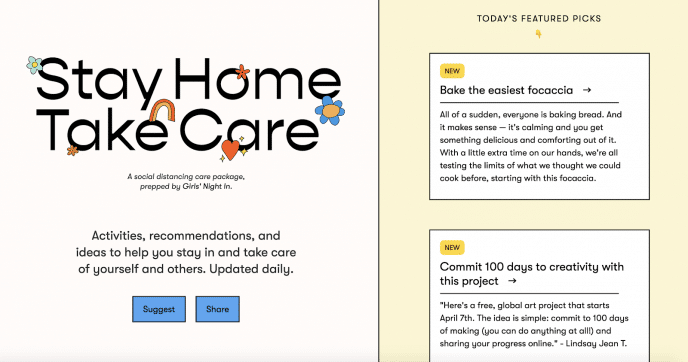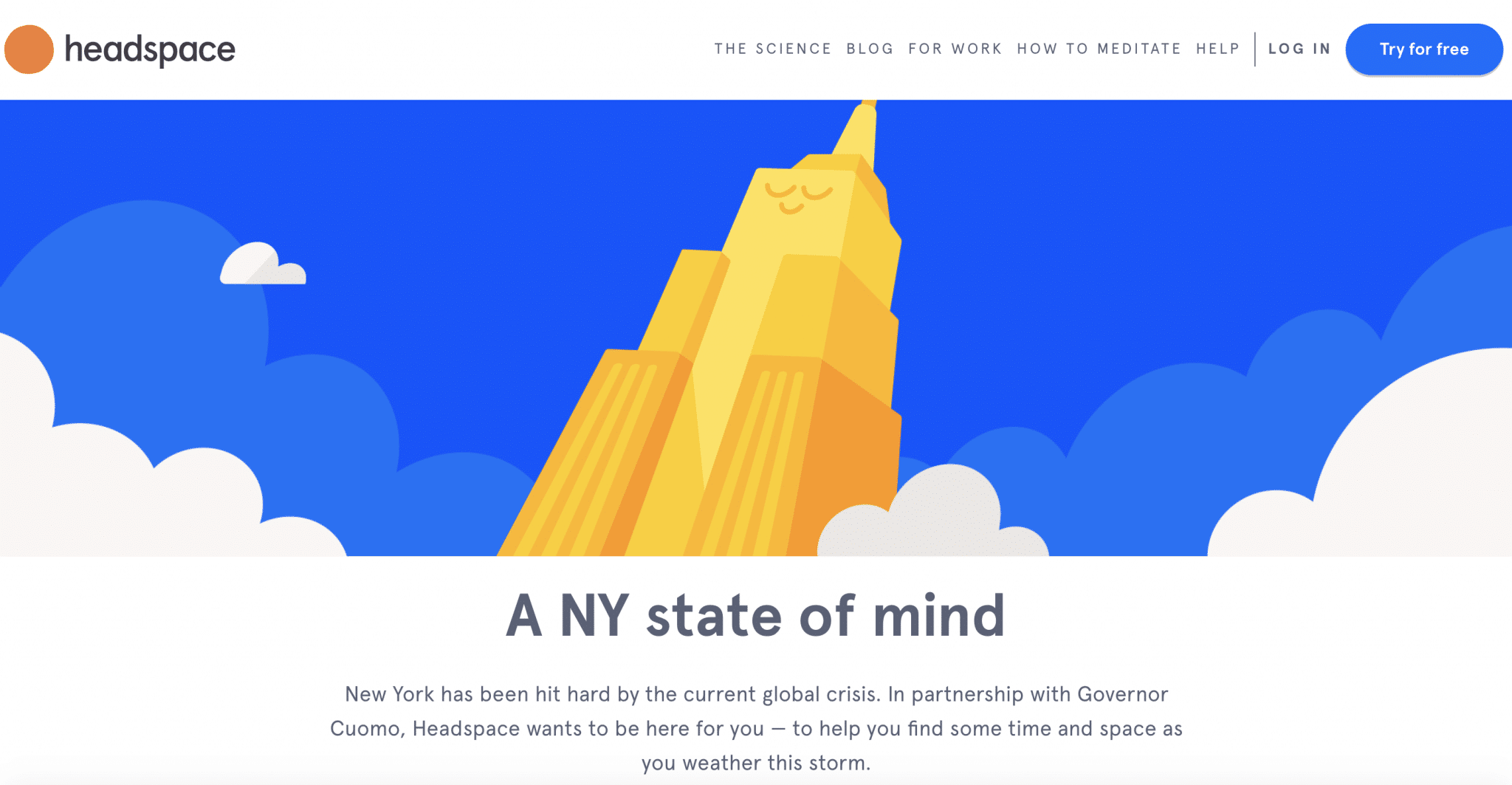Creating genuine content: On a good day, it’s important. In a time of crisis, it’s critical. Now, more than ever, you want to pay the utmost attention to not only what you’re saying, but how you’re saying it. Adapting on the fly doesn’t have to come at the cost of being genuine.
You’ve built (or are building) an audience with which you want to empathize, and when the world is in crisis, you can—and should—keep that connection strong.
We talk a lot at Taboola about creating good, genuine content, and avoiding being just another brushed-past piece of noise in someone’s digital journey du jour. But today, we’re taking the conversation another step further.
This is how to create genuine content that connects with your audience when both you and they are experiencing a time of crisis.
Provide real, tangible value
It’s a general rule of thumb that good, genuine content always provides the reader or consumer with some degree of value. Whether that’s literal value in the form of a discount code, a lesson or emotional takeaway, or even just entertainment—to be genuine, content has to serve a purpose.
Now more than ever, people are limited in a lot of ways—limited in time, limited in resources, and frankly, limited in emotional capacity. If you’re working to distribute native content during this time, it’s important to consider the state that your potential audience might be in and really offer something to them.
Example #1: Hyundai
Hyundai joined its auto industry peers in creating a heartfelt video to let consumers know that they’re working to help customers who are out of work amidst the COVID-19 crisis. The value of this video comes in a few forms, from its emotional sentiment all the way to its helpful financial takeaway.
Example #2: Book of the Month
This type of value-add is not just reserved for big brands creating content to make a difference in the global community and uplift their audiences’ spirits. That work is important, but you don’t need a big budget or a household name to do it, too.
Small companies and brands everywhere are taking this time to create native content that places value at the forefront.
Take, for example, Book of the Month. This book subscription service is committed to helping their members discover new favorite reads. On a regular day, their messaging encourages making time for reading, but in light of people spending more time at home and perhaps looking for a book to get lost in during downtime, they’re keeping that messaging strong and highlighting a low price at which people can do so.

Book of the Month is doing their part to provide an outlet for their audience, to help promote the critical measures the whole world is adjusting to following, and offering up a pick from their entire selection for a discounted price.
Make it about them, not you
When creating native content, it’s already inherently clear that you’re looking to connect your product or service with a person who may sign up, make a purchase, learn more, etc.
Take this opportunity to double (and triple) check that your content truly is about the audience, and that it’s made to serve your audience, or you run the risk of being filtered out.
Example #3: Quicken Loans
In a new ad from Quicken Loans, the company sets a serene scene to accompany their new messaging of “Your Success is Our Focus”
Example #4: Girls Night In
Another brand bringing their audience to the forefront is Girls Night In. In regular times, Girls Night In is a community of like-minded people seeking self-care-centric tips, ideas, and information anchored in the idea of staying in and doing more at home.
This concept lends itself naturally to the state of the world amidst COVID-19, and Girls Night In very well could have left it at that, and continued to be the same type of resource to their audience. But, they took it a step further and found a way to really make their communications about their audience.

Girls Night In launched an entirely new website, stayhometakecare.com. The website functions as a virtual take-a-penny-leave-a-penny, where visitors can both find recommendations under categories such as “I want to feel comforted” and “I want to help others.
They can also leave suggestions, recommendations, links, tips, and more via a Google Form. It’s these very submissions that make up the content of the site. It’s for the community, by the community, and an extra effort to make it about community, too.
Be the authority that you are (and not one you’re not)
In these unprecedented and scary times, the spreading of false information or information from unqualified sources can be quite harmful.
That’s why it’s important now more than ever to stick to what you know. Dig within the areas of expertise your company has, and put those at the forefront.
Are you a fitness company? Wrap your native content around the benefits that exercise can have on mental health.
Own a local restaurant? Let customers know if and how you’re operating, as well as how they can help right within their own communities.
Example #5: Cottonelle
For a large company like Cottonelle, in light of toilet paper stockpiling amidst COVID-19, it was important for them to speak as an authority and be a direct source of information for people who needed to know that there will be toilet paper available, but feeling unsure. This was the impetus behind their #ShareASquare campaign.
Example #6: Headspace
The same is true with Headspace’s partnership with New York State. The team at Headspace may not be experts on everything pertaining to COVID-19, but they sure are experts on the science behind meditation and mindfulness.
When called upon to be a resource for mental health, they stepped up to the plate and put all of that expertise to good and important use.

The bottom line is that every company has knowledge and expertise in something—creating genuine native content in a time of crisis is all about putting it to its utmost best use.
Value, expertise, and people first
At the end of the day, whether you’re a household name or a local operation, reaching your audience with genuine native content in a time of crisis comes down to just a few key principles.
- Provide more value than ever. People are limited in every capacity of the word—make the time they do choose to interact with brands as valuable as possible.
- Put people first. Consumers have their ad filters cranked to high, and for good reason. Avoid the urge to sell hard, and instead lean into the idea of truly being of service.
- Showcase expertise. Now is the time to step up and be an authority where it matters, and that comes in countless ways. Think outside the box.
In any circumstances, ensuring that content is genuine should be top of mine. We hope during this time of crisis the world is facing together that you’ll give it extra consideration, and be a resource and a source of goodness for the audience you have, and the audience who is yet to discover you through the content you create.